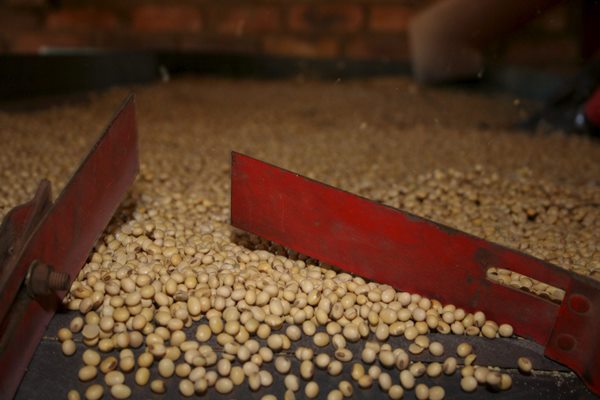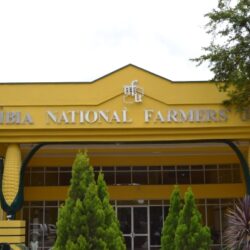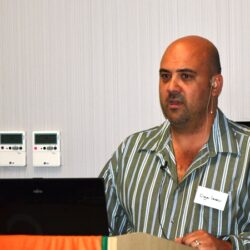When the rainy season arrives, it’s crucial that crop farmers have clear planting plans, know the size of the lands to be planted and how to implement their programmes.
You can only plant as many hectares you can afford to, so available finances play a critical role. With proper planning a farmer can manage the risks associated with cropping. Do not plant any crop without knowing what and where your market is. So, produce a crop with a demand that will show some profit.
The current roll-out of grain futures (forward contracts) in Zambia by ZAMACE will be a huge help to farmers because contracts protect the farmer’s price, should commodity prices fall during the season.
Make sure your machinery and implements are serviced, cleaned and greased before the planting season starts, because it’s not practical to repair tractors and implements once the season is in full swing.

CROP REQUIREMENTS
“The 3 most important aspects for successful soya bean production are: plant population, planting date and the growth class of suitable cultivar for each production region,” says Kenneth Chitindi, Lusaka based Pannar consultant.
Zambia’s soya planting season is between mid-November and mid-December and virtually the entire region, barring the Valley, can be planted to soya beans. Temperatures above 30˚C have a negative impact on yields and temperatures below 13˚C , especially during flowering, inhibit flower and seed formation.
For germination, temperatures of 15°C are ideal. Seedlings in the early stages are sensitive to hot weather.
Zambia’s rainfall fits the crop requirements of between 500 mm and 900 mm, but the timing of rainfall events is also important. There should be sufficient rain from bud formation to pod fill. Too much rain before and during flowering can lead to lodging (the plant is top heavy and lodges – falls over).
Soya beans need well drained soils with good water holding capacity, and can tolerate a lower pH than most legumes. However, nitrogen fixing will be reduced if the pH is below 5.2. Test your soils and lime where the soil is overly acidic.
Like all leguminous crops, soya binds nitrogen in the soil and leaves what it does not use for the next crop – generally maize. At planting 150 kg of Basal dressing should be applied and seed should be dressed with a fungicide.
SEED RATE, INTER-ROW AND INTERPLANT SPACING
The seed rate is 100 kg/ha, spacing is 45 cm to 50 cm between rows and 2 cm to 10 cm between plants. Denser plant populations are acceptable in higher rainfall areas. To check for seed viability, a germination test should be done, but bought in seed purchased from any reputable seed company should not require testing.
Testing for germination involves planting about 100 seeds in moist soil and checking how many have germinated after a week. A germination rate of 75% or higher is acceptable.

NITROGEN (N)
The nitrogen requirements of soya are met by nitrogen fixation in the root nodules, but seeds should be inoculated with the correct nitrogen-fixing bacterium, Bradyrhizobium japonicum, before planting. The plants can then fix nitrogen for their own requirements, and carry over 30 kg to 50 kg of available nitrogen for the next crop.
CULTIVAR CHOICE
Cultivar choice is influenced by planting date. Soya is sensitive to day length, and temperature, and a given cultivar will ripen later and result in a longer growing season the further south it is planted in Southern Africa. Planting dates influence the length of the growing season and cultivar A, for example, will flower earlier if it is planted at a later planting date.
TILLAGE
Soya can be conventionally tilled or ‘conservation tilled’; partial no-till is also practised successfully. It’s up to the individual farmer what cultivation method he goes for, although conservation tillage is gaining in popularity and has definite advantages. Importantly, Soya needs good seed-to-soil contact and prefers to be planted in a slightly moist soil. Any kind of earth shield is not good for Soya because it will damage the emerging plant.
FERTILISER
Soya beans need more phosphorus, potassium, magnesium and calcium than maize does. Fertiliser should be 10 cm to 15 cm deep, below or to the side of the seed. Demands vary from region to region and it is always essential to get your consultant out who will help you work out what you need according to the soil test.
It is my experience that the seed guys really go all out to help their clients. If your acreage is fairly small, get together with other small, neighbouring planters to form a group, so that it’s feasible for the consultant to visit and advise.
Sulphur is low in a number of tropical soils and sulphur deficiency can hit yields – once again you need to have done the soil test, and use the advice of your local seed company.
So much about agriculture depends on a level head and a good dose of common sense; think your strategy through and talk to other farmers in your commodity. Unfortunately farming is not a forgiving business, and a single mistake can cause you to lose your crop. On the plus side farmers tend to be common sense people, which works in their favour.
For more information contact Kenneth Chitindi, at Pannar: kenneth.chitindi@pannar.co.zm




